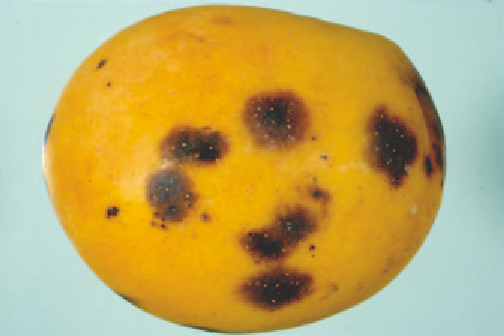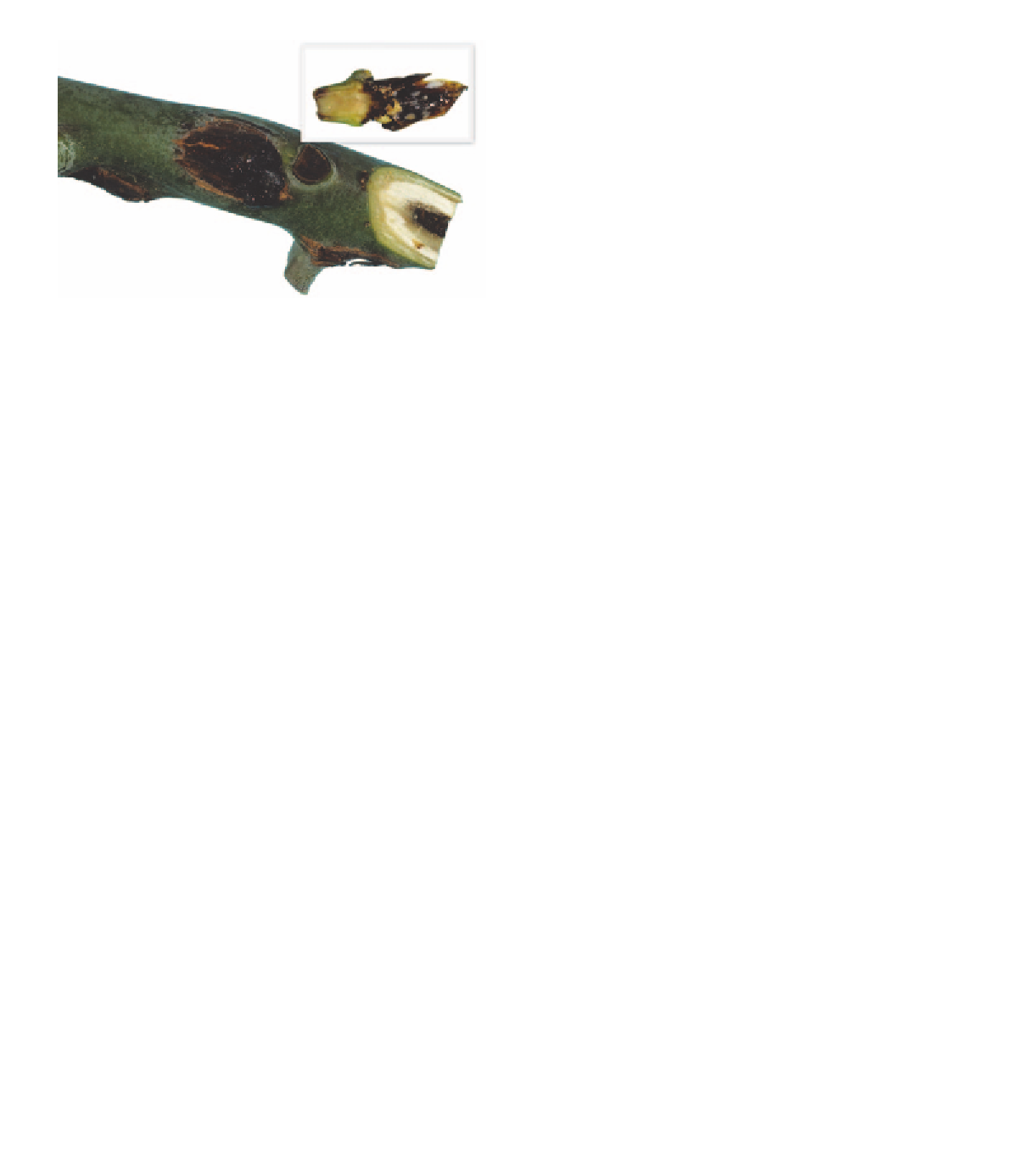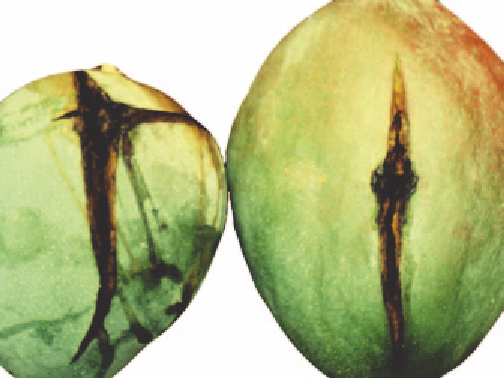Agriculture Reference
In-Depth Information
FUNGI
ALTERNARIA ROT
■
Cause
The fungus
Alternaria alternata
.
Symptoms
Small, brown spots with diffuse margins expand into
extensive, dark brown lesions at the stem-end or on the
sides of fruit. A white-to-grey fungal growth may cover
the surface of the lesions.
Fig 12.8 Internal symptoms of bacterial black spot on a stem
and growing tip.
Source of infection and spread
This fungus has a wide host range and causes leaf spots
and fruit lesions in several crops (e.g. tomato). The spores
are air-borne. Infection can occur before or after harvest,
but symptoms do not begin to develop until the fruit have
ripened.
Fig 12.9 Bacterial black spot showing cracking in immature fruit of
cultivar Keitt.
Do not raise rootstocks or propagate grafted trees under
infected mango trees or close to other inoculum sources.
•
Fig 12.10 Early Alternaria rot on mango. Symptoms first appear as
scattered, dark spots.
For fi eld planting, select a site protected from strong
winds and provide adequate wind protection around
and within the orchard.
•
Avoid sprinkler irrigation and rely mostly on drip
irrigation.
•
Plant cultivars that have some degree of resistance, such
as Sensation, Kensington (Groszmann), Carabao, Nam
Dok Mai, Early Gold, etc.
•
Apply copper-based protectant fungicides at fortnightly
intervals during wet weather and monthly at other times.
During fl owering avoid copper and substitute with
dithiocarbamate fungicide applications.
•
Destroy inoculum sources on infected trees through
regular end-of-season pruning.
•
Fig 12.11 Advanced Alternaria rot on mango. Fungal growth may
cover the surface of large lesions.
Do not market fruit that show bacterial spot.
•














